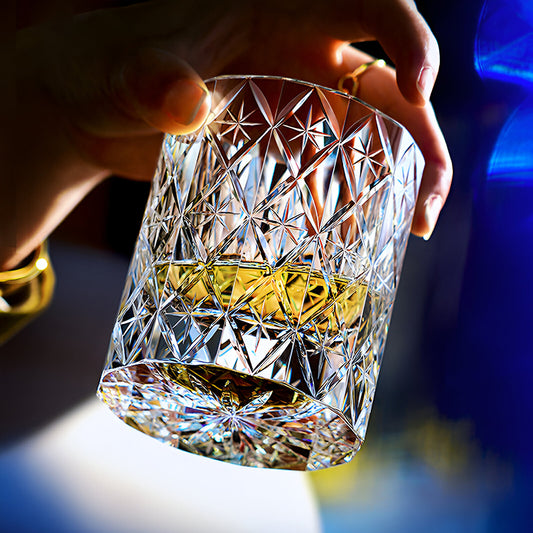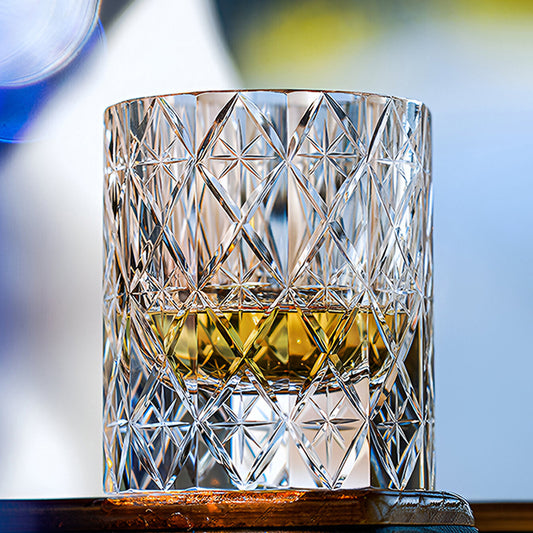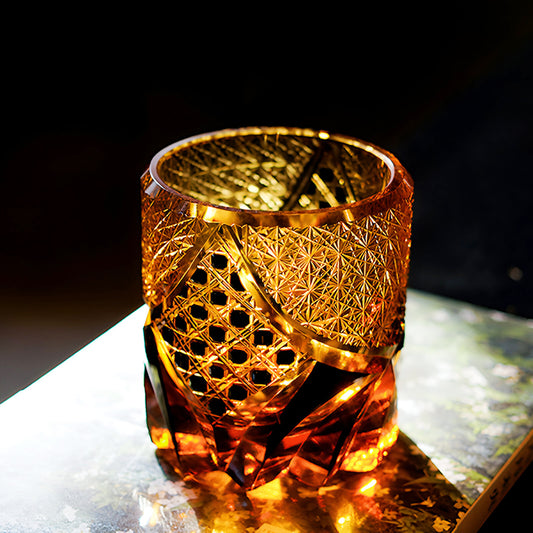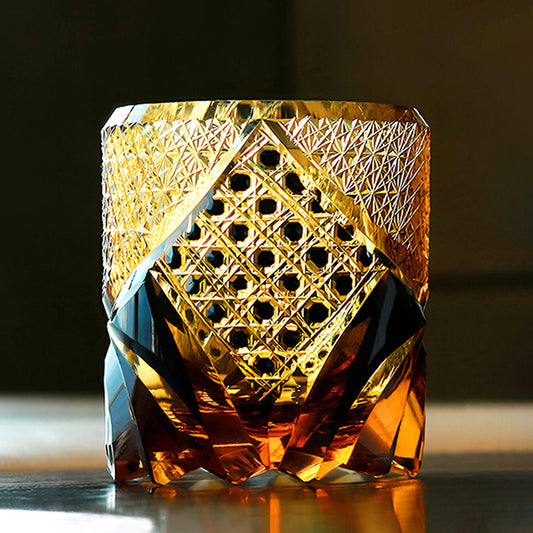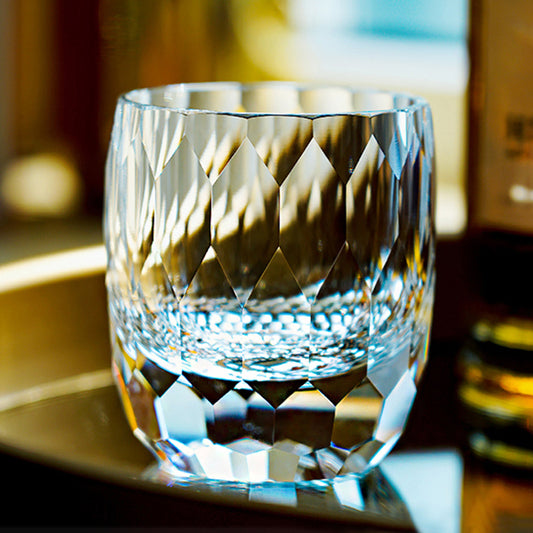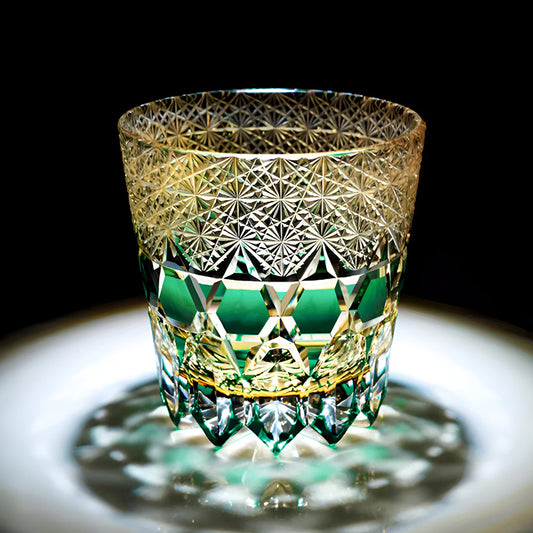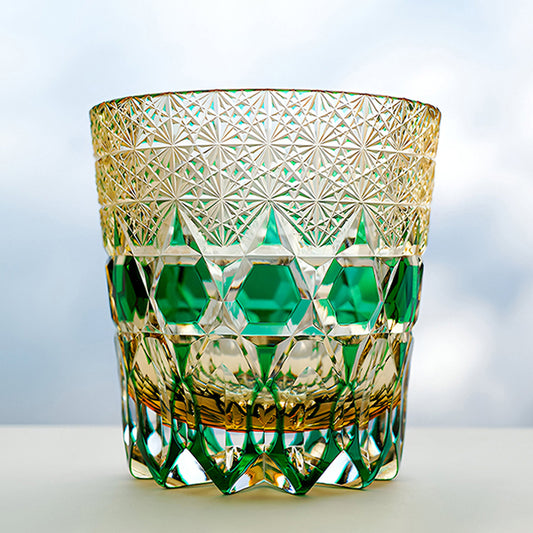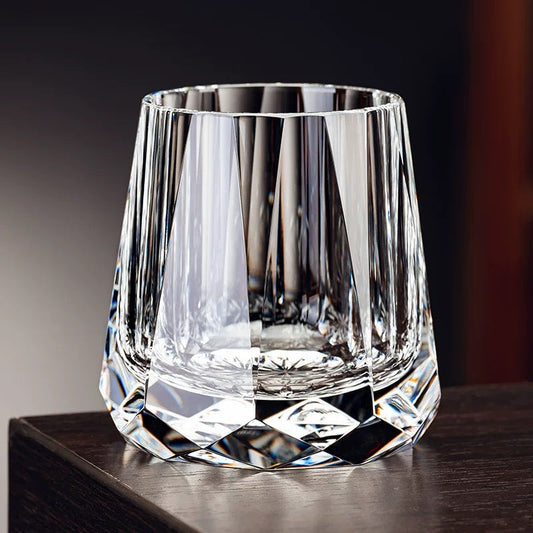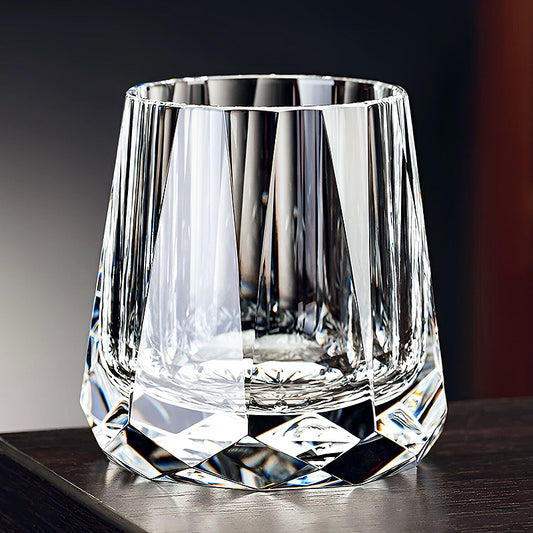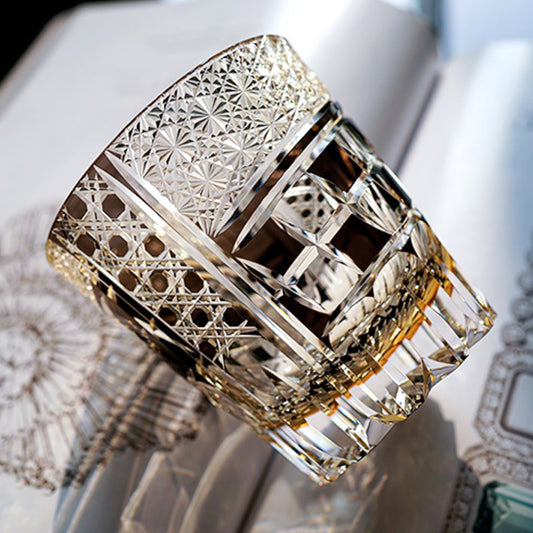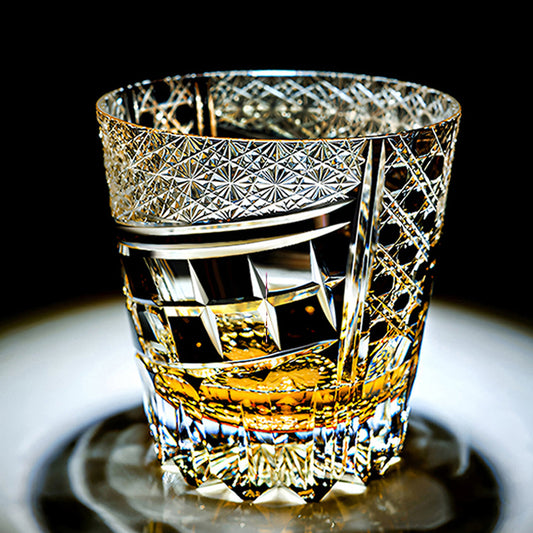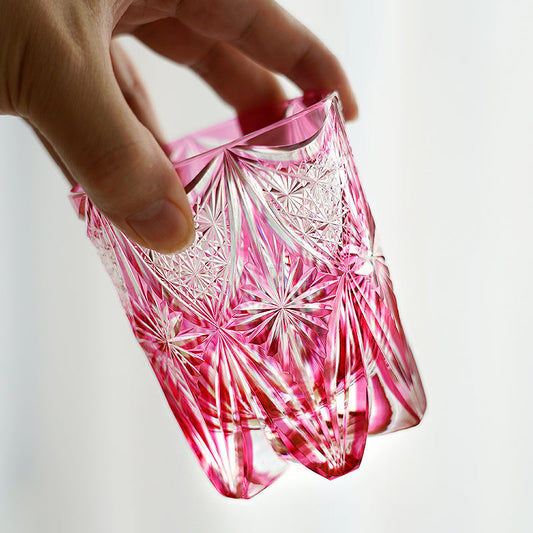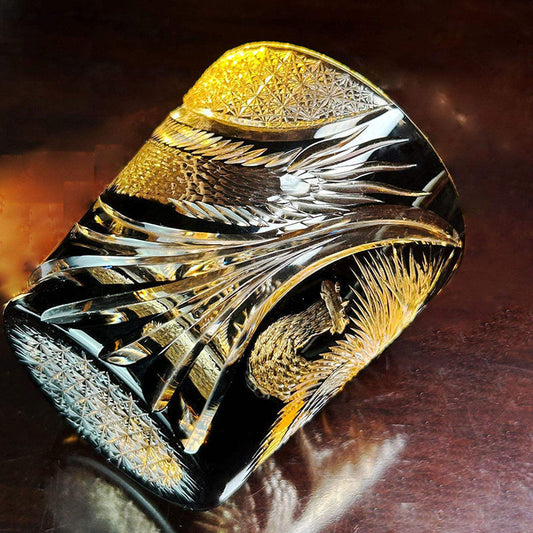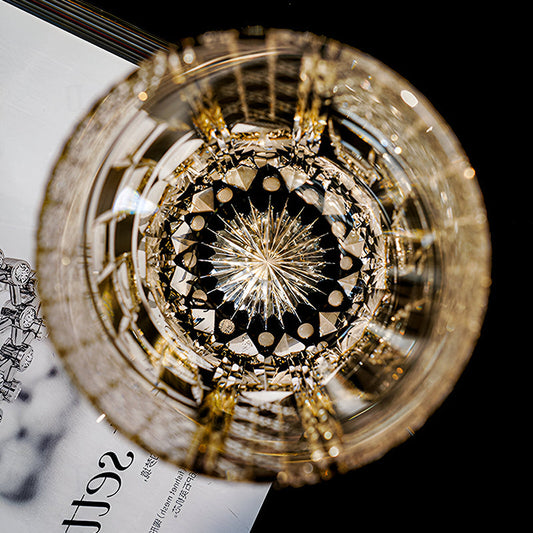The mathematical formulas hidden within the fish roe patterns continue to captivate scholars. This intricate pattern, composed of countless tiny dots, actually utilizes Fibonacci spiral arrangements. Although the artisans of the Edo period were unfamiliar with the golden ratio theory, they derived the most aesthetically pleasing layout through generations of experience. This enigmatic mathematical composition enhances the allure of Edo Kiriko's fish roe patterns, making them even more mysterious and captivating. Each position of every dot is meticulously calculated, ensuring visual harmony and imbuing the patterns with a unique sense of dynamism. Scholars have discovered that this arrangement not only adheres to natural growth patterns but also perfectly aligns with the aesthetic pursuits of 'harmony' and 'order' in Edo-era aesthetics.

The diamond cuts in the Yarai pattern subtly reflect the defensive wisdom of Edo Castle. Each 60-degree acute angle is meticulously calculated so that when sunlight passes through, it casts shadows resembling warning lines on the ground, originally designed as a special signaling system for the shogun's guards. This design not only showcases the cleverness of the artisans but also combines history with art, becoming a prominent feature in Edo Kiriko patterns. The inspiration for the Yarai pattern originates from the defensive fences of Edo Castle; its diamond structure not only provides a visual sense of dimensionality but also symbolizes the Edo-era pursuit of order and security. Each cut undergoes careful consideration to ensure the best visual effect in changing light and shadow.

The creation of the Spider's Nest pattern was inspired by an unexpected event. During the early Meiji period, imported British glass at Yokohama Harbor developed natural cracks due to temperature differentials. Japanese craftsmen transformed this defect into 88 standardized crack patterns. The most complex 'Eightfold Spider's Nest' requires 128 directional cuts to be completed within the golden 30 seconds of glass cooling. This innovative transformation of accident into beauty showcases the artisans' unique understanding and creativity in art. Every crack in the Spider's Nest pattern is meticulously designed, preserving the random beauty of natural cracks while imbuing it with a unique sense of order through the artisans' skillful hands. This pattern not only symbolizes the artisans' reverence for nature during the Edo era but also demonstrates their exceptional skill in turning decay into enchantment.

Within the storage rooms of the Tokyo National Museum lie the secret scrolls of the 'Six Great Families of Kiriko' from the Tenpo era. On aged Japanese paper, 221 pattern codes are recorded, such as 'Chrysanthemum Water = Three-stage gradient + Light refraction rate of 0.78', these craft parameters encoded in cryptic language continue to serve as the Rosetta Stone of deciphering Edo aesthetics. These clandestine codes of traditional craftsmanship carry the wisdom and skills of the artisans, adding an extra layer of mystery to the unique charm of Edo Kiriko. Each scroll is like a book of codes, documenting the artisans' profound understanding of light, materials, and craftsmanship. Scholars, through deciphering these codes, gradually unveil the scientific principles and artistic philosophy behind Edo Kiriko.
Furthermore, the pattern designs of Edo Kiriko also incorporate cultural symbols and folk beliefs of the time. For example, the 'Chrysanthemum Water pattern' symbolizes longevity and auspiciousness, drawing inspiration from traditional Japanese chrysanthemum patterns. Through glass refraction and cutting techniques, it presents a unique three-dimensional effect. The 'Thunder pattern' mimics the shape of lightning, symbolizing power and protection against evil, with its intricate cutting process requiring artisans to complete it within a very short time, demonstrating their precise control over time and space.
The crafting process of Edo Kiriko is filled with challenges and wisdom. Artisans must complete complex cutting and carving during the glass cooling process, a process known as 'taking chestnuts from the fire,' where a slight mistake could undo all previous efforts. Each piece of Edo Kiriko is a testament to the artisans' wisdom and patience, with its unique beauty stemming not just from the design of the patterns but also from the artisans' meticulous attention to detail.

The pattern designs of Edo Kiriko are not merely decorative but also a form of cultural inheritance and expression. Through these patterns, we catch a glimpse of the philosophical, aesthetic pursuits, and spiritual world of the people in the Edo period. Each cut, each pattern, represents the artisans' profound understanding and unique interpretation of nature, history, and art. The Edo codes within these glass patterns not only allow us to appreciate the beauty of traditional craftsmanship but also make us feel the wisdom and creativity of artisans transcending time and space.



